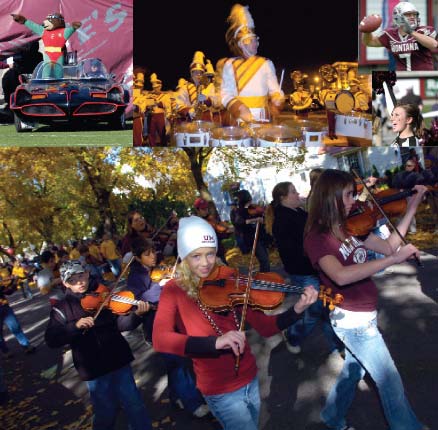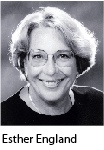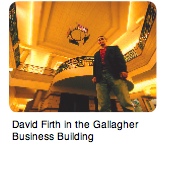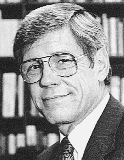The Oval
2006 Homecoming
It was a gorgeous October afternoon, with the largest parade ever, topped off with a 33-17 victory over Eastern Washington.

Memorable Teachers
 Ask any student of UM alumnae Esther England ’66, M.A.’74, and Margaret Johnson, M.A.’71, and chances are they would say that Esther or Margaret was one of their most memorable teachers. Richly talented in their art as well as in the art of teaching, England and Johnson initially appeared together on the UM stage forty-one years ago in a production of Night of the Iguana. They will appear together again on Saturday, April 14, when they are the honorees of UM’s School of Fine Arts seventh annual Odyssey of the Stars—A Celebration of Artistic Journeys.
Ask any student of UM alumnae Esther England ’66, M.A.’74, and Margaret Johnson, M.A.’71, and chances are they would say that Esther or Margaret was one of their most memorable teachers. Richly talented in their art as well as in the art of teaching, England and Johnson initially appeared together on the UM stage forty-one years ago in a production of Night of the Iguana. They will appear together again on Saturday, April 14, when they are the honorees of UM’s School of Fine Arts seventh annual Odyssey of the Stars—A Celebration of Artistic Journeys. Former students of the two will gather on the University Theatre stage to perform and celebrate their careers. An event that benefits the School of Fine Arts scholarship fund, Odyssey of the Stars showcases performing and visual arts alumni who have gone on to successful careers in the arts, in concert with current UM students.
 England, a mezzo soprano, Fulbright Scholar, UM professor emerita of music, and former associate dean of the School of Fine Arts, taught voice at UM for thirty-six years. Before her teaching career she spent several years studying and performing solo roles in opera and oratorio in Germany and France. England founded and for thirteen years directed the Western Montana Community Opera Workshop. In addition to her work with the Department of Music, she has served as musical director for both the UM Department of Drama/Dance and Missoula Children’s Theatre musical productions. A number of her voice students have gone on to major careers in musical theatre and opera, both in the United States and in Europe.
England, a mezzo soprano, Fulbright Scholar, UM professor emerita of music, and former associate dean of the School of Fine Arts, taught voice at UM for thirty-six years. Before her teaching career she spent several years studying and performing solo roles in opera and oratorio in Germany and France. England founded and for thirteen years directed the Western Montana Community Opera Workshop. In addition to her work with the Department of Music, she has served as musical director for both the UM Department of Drama/Dance and Missoula Children’s Theatre musical productions. A number of her voice students have gone on to major careers in musical theatre and opera, both in the United States and in Europe. Johnson, an educator and actress, spent thirty-seven years teaching drama and English at Missoula’s Sentinel High School. During her teaching career she directed more than 190 productions. Johnson served as the state director of the International Thespian Society from 1970 to 1993. Performing since she was fourteen years old, her favorite roles have included Betty in The Foreigner and Mother Superior in Nunsense. Johnson was last seen on stage in the Missoula Children’s Theatre production of My Fair Lady. When she retired from teaching in 2001, Sentinel High School honored her years of service and dedication to teaching by naming the school’s theater the Margaret Johnson Theater.
Award-winning Campaign Puts UM’s Best Face Forward
 In one of UM’s swanky new television commercials, a leading bird researcher takes flight from the Oval. In another, a little boy wanders the Hall of Champions and dreams of the day he, too, can play for the Griz.
In one of UM’s swanky new television commercials, a leading bird researcher takes flight from the Oval. In another, a little boy wanders the Hall of Champions and dreams of the day he, too, can play for the Griz.The seven spots are part of an award-winning marketing campaign crafted by UM Executive Vice President Jim Foley to promote the University and boost enrollment. “It’s been extremely fulfilling seeing this campaign unfold,” Foley says. “The response from our alumni and fans has been outstanding. They say it makes them proud to be a Griz.”
The commercials were created by Chisel Industries, a Montana-based marketing and production studio with Hollywood experience. Chisel uses 35-millimeter cameras, lighting equipment, camera cranes, and other specialized equipment to give its work a polished look.
Foley says production started on the campaign last June. He says the spots highlight University academics, research, and athletics while instilling a feeling of pride about being associated with UM. And they already have been rewarded with a Grand Gold Award from the regional Council for Advancement and Support of Education.
Five of the ads feature UM faculty members. They are chemistry Professor Garon Smith, Oxford-educated business management Assistant Professor David Firth, biology Professor Ken Dial, pharmacy practice Associate Professor Donna Beall, and music Assistant Professor Luis Millan. The other ads, focused on sports, are “Legacy,” which highlights UM’s history of athletic excellence, and “Griz Country,” about Missoula’s contagious community spirit, the fans, and anticipating the football action at Washington-Grizzly Stadium.
Foley says the commercials have been shown on local Missoula television stations, cable outlets statewide, a regional sports network, and ESPN during the Grizzlies’ appearance in a nationally televised semi-final football game. Audio clips also play on radio stations across Montana. The spots also will be displayed through interactive media —such as streaming them to prospective students—as well as online and via recruitment DVDs.
Chisel Industries also produced the new “This is Griz Nation” video used on the big screen at home football games. Foley says stories featuring the UM community, lifestyle, and alumni success will be told as the campaign continues. “We are pleased with how all the videos turned out,” Foley says. “They generate excitement and name recognition that can only benefit UM.”
The President's Corner

As usual, this issue of the Montanan covers a great number of recent developments at The University of Montana. From my perspective, the effort we have launched to raise the funds to construct a Native American Center on campus has the potential to enrich all our lives. As you know, we live in Indian Country, and for years the campus served the first Montanans as fruitful digging ground for camas and bitterroot plants and a place to camp and rest. In addition, as I was told by Clarence Prescott prior to his demise at 100 years of age, Native peoples made extensive use of Mount Sentinel when they visited the area. I cannot imagine a more appropriate site than the one selected that looks directly at University Hall and Mount Sentinel. We have some early photographs showing encampments in the broad plain that became the location for University Hall and UM. It remains Indian Country.
In preparation for construction of the center, we invited elders and spiritual leaders from all twelve tribes in the state to come to campus during Homecoming to consecrate the ground. All accepted, marking a historic first, and we had a wonderful ceremony. I believe I speak for all in attendance—and we had a large crowd—when I emphasize the moving and inspiring experience of the consecration. Had we needed an incentive to move forward, the experience certainly provided it. We will now move forward with energy and dispatch to achieve the objective.
Some people have questioned either our commitment or our record of achievement. I think the record is clear. From the time in the 1960s when some courageous students established the Kyi-Yo Club on campus to the present, UM has enhanced its commitment and support of Native American students. UM has the largest congregation of Native American students on any campus in the state except the tribal colleges. In that regard as well, this University ranks nineteenth nationally for the graduation of Native Americans with baccalaureate degrees. That has occurred because of the deep and abiding sense that we all share in having our lives enriched by the cultural legacy of the first Montanans.
![]()
George M. Dennison ’62, ’63
President and Professor of History
New Deans
 UM welcomed two new deans in 2006: Barry Good, dean of the College of Technology, and Bonnie Allen, dean of library services.
UM welcomed two new deans in 2006: Barry Good, dean of the College of Technology, and Bonnie Allen, dean of library services.
A West Virginia administrator with extensive experience working at two-year colleges, Good was vice president for academic affairs at West Virginia Northern Community College in Wheeling before taking the helm at UM’s COT last July. “Barry Good brings to the campus the experience, expertise, and collaborative style that will further our efforts to respond to the needs of traditional and nontraditional students,” says UM President George Dennison.
Good earned a master’s degree in biology from Northeast Louisiana University in 1972 and a doctorate in botany from Louisiana State University in 1978. From 1978 to 1992 he worked as a college faculty member, a loss control engineer, in research, and in other capacities. He was named chair of the Department of Science at Gaston College in Dallas, North Carolina, in 1992 and in 1995 was leading the Division of Sciences at Louisiana State College in Eunice.
Good replaced Paul Williamson, who accepted a special assignment earlier in 2006 to work on University projects related to alternative energy and a long-range building plan for COT.
Allen, who has more than thirty years experience at college libraries, came to UM from Oregon State University, where she was associate university librarian from 1999 to 2006. She holds an M.B.A. from Portland State University and a master of library science degree from Indiana University. From 1992 to 1999 she was director of the Learning Resource Center at Clatsop Community College in Astoria, Oregon. She has also held library services positions at the Oregon Graduate Institute, Willamette University, and Northern Arizona University.
Allen replaces Frank D’Andraia, who left UM last June for a position with the University at Albany, State University of New York.

UM Filmmakers Score with Documentary on Evelyn Cameron
The Montana PBS historical documentary Evelyn Cameron: Pictures from a Worthy Life received a CINE Golden Eagle Award last summer. Based in Washington DC, the CINE awards honor high production standards in filmmaking and videography.
The Evelyn Cameron documentary was judged in CINE’s biography category. Other biographies that were honored featured singing legends B.B. King and Bob Dylan and authors Ernest Hemingway and Willa Cather.
Evelyn Cameron photographed eastern Montana in the late nineteenth and early twentieth centuries, leaving a legacy of thousands of photographs and extensive diaries about pioneer life in Montana.
“It’s been wonderful to share Evelyn Cameron’s story with people around the country and get such positive feedback,” says Montana PBS producer John Twiggs. “It’s just great to see Evelyn Cameron’s work viewed and appreciated along with these other great artists.”
“This award puts Montana PBS in very select company,” says William Marcus, director of the Broadcast Media Center at UM and manager of Montana PBS station KUFM-TV. “Some of the other winners included WNET, New York and The Newshour with Jim Lehrer. This reflects well on the interesting stories and quality of work coming out of Montana.”
The Cameron program was produced by John Twiggs with associate producer Alison Perkins and photographers Gus Chambers and Ray Ekness.
Staring a Dream in the face
UM University Relations’ student staff member Brianne Burrowes interned with Seventeen magazine last summer. As is often the case, the lessons the experience offered weren’t exactly what she had expected.
I started my internship at Seventeen expecting to suffer the typical initiations. I knew I would make hundreds of copies (I did), research material for my editors (LexisNexis became my best friend), and fetch lunch for my boss (she likes a turkey wrap with green apples and a Red Bull). I didn’t expect my life to change.
At only twenty-one years of age, I’ve lived through moments where I’ve had no choice but to grow a tough skin. In the fall of 2005 I was on an MTV reality series, Miss Seventeen, and after confrontations with the girls and walking off the show, I was a favorite subject of national gossip columns.
The winner of the competition, who also happened to be my nemesis on the show, began work at Seventeen a few weeks after me. Surprisingly, we became friends, bonding over sharing the experience of the show and our first internship in the business.
A month into my internship I was given my first assignment. I needed to find “hot” guys between the ages of fifteen and twenty-one from different states to interview. The question I was to ask? What do you think when you’re making out with a girl? I wanted to laugh out loud. Three years of journalism school and here I am asking high school boys about relationships. After years of college and heartache, I know high school boys know nothing—at all—but I trudged on.
I went through every contact in my cell phone. I called people I hadn’t talked to in years to ask if they had a younger brother or cousin who would talk to me. Two days into my interviewing I caught a wicked cold. I was now calling the “hot” guys without a voice. I had to whisper. Some thought it was funny, and I’m sure others thought it was crazy. One guy even told me he thought my disappearing voice was sexy. Either way, I was typing and blowing my nose simultaneously because I didn’t want to let my editors down. This was the opportunity I had been waiting for since I first hit puberty and I couldn’t mess it up now.
Fast forward to the end of the summer. I’d made my deadline, been assigned other articles, and even pitched ideas to the editor, which she chose to include in upcoming winter issues. Of course, I’d also made pounds of copies, but I’d survived and with my journalistic integrity intact, or so I thought.
On my last day I sat in the editor’s office, thankful to be wearing black, as I was sweating profusely. My mind was running faster than Marion Jones in the Olympics. This was my moment to convince the editor that I was the right girl for the next staff opening at her magazine.
Suddenly, walking to Tiffany and Co. in the rain when I was sick to pick up an order for her and spending sleepless nights developing pitches for the magazine seemed like well-invested stock. But something didn’t feel right.
I no longer wanted to write for a teen magazine. As I was sitting across from her talking about my passion for Seventeen, I realized I’d actually lost respect for the publication over the course of the summer. Everything people had told me about magazines being shallow suddenly rang so true.

Here was the editor-in-chief of the most successful teen magazine in the United States sitting across from me. She was gesticulating wildly, discussing celebrities she put on the cover who really weren’t role models, and all I could do was stare at her heavily penciled brows, hairspray helmet hair, and Christian Louboutain shoes. I realized I had become just as shallow as the magazine I was working for.
I wasn’t happy with myself. I am a writer and I take pride in my words. At Seventeen I didn’t have words. I had pre-packaged quotes from “hot” guys that would be edited down to a sentence. I didn’t like who I had become. I was staring my dream in the face and I didn’t want it anymore. I had grown up. I was no longer a Seventeen girl.
What she said at the end of my exit meeting made my decision about the teen magazine industry final: “Brianne, I see a lot of myself in you.”
And in the four seconds it took her to tell me that, I realized I’d been chasing the wrong dream. I was never meant to guide high school girls on their love lives. I wanted to make a real difference in the world.
After all, I am a journalist.
—Brianne Burrowes